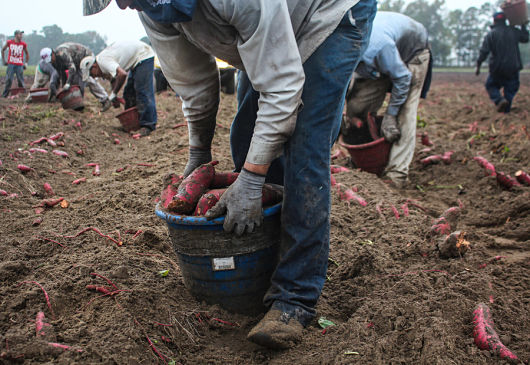
‘Alafie Wuljo’ – otherwise known as healthy potato – has recently become one of Ghana’s most famous crops. This sweet potato variety was introduced in a USAID project in order to counter vitamin A deficiency, a condition that weakens the immune system and can lead to blindness. The project’s main goal is to improve the livelihood and nutritional status of Ghana’s most vulnerable populations.
Sweet potatoes are primarily beneficial to children, whose vitamin A requirements can be met simply by eating the healthy potato. Notably, the 2008 Ghana Demographic and Health Survey states that “28 percent of Ghanaian children under the age 5 are stunted, 7.5 percent are wasted, and 13.9 percent are underweight.” Therefore, the emerging sweet potato is necessary to improve the health of starving and malnourished children.
The International Potato Center (CIP) plans to reach 15 million households in the next 10 years by responding to the demand for the orange-fleshed sweet potato. The CIP director states, “We can soon claim to have reached a milestone in our history by reaching one million households in Africa with sweet potato – preventing blindness and stunting in children along the way.”
The little orange potato has assisted Ghana’s vulnerable communities while also bringing camaraderie to villages. At one of the communities’ harvest celebrations, young children were taught how to cook the potatoes and now everyone wants to grow these crops.
The expansion of crops in Ghana, however, is not the only focus of USAID’s project to diminish malnutrition in Ghana. Aside from agricultural initiatives, efforts to improve the lives of villagers include areas such as clean water, sanitation and hygiene. All of these factors are interrelated and can work together to improve standards of living.
Through the use of new crops in Ghana, USAID aims to decrease chronic malnutrition, measured by stunting, by 20 percent through the U.S. Government’s Feed the Future Initiative and Global Health Initiative, the Office of Food for Peace development programs, resilience efforts and other nutrition investments.
– Megan Hadley
Sources: USAID 1, USAID 2, JSI, The World’s Healthiest Foods, My Joy Online
Photo: Google Images

